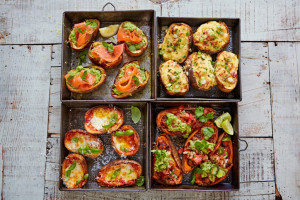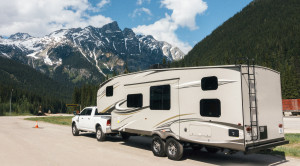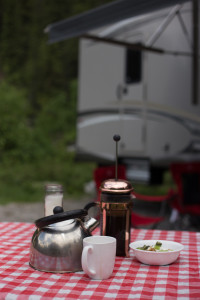
Part 2 – Learning more RVing lingo…
Types of Campers
Full-timers: People who live out of their RV year round.
Newbies: People new to the RV world.
Traveller burnout/fatigue: Newbies are most susceptible this condition. There is lack of motivation, typically caused by following a fast-paced travel schedule for an extended time. Experienced full-timers know to pace themselves and recognize that it is good to save something for later.
Part-timers, seasonals: People who live months at a time in their RV but still hold a place of residence elsewhere.
Weekenders: People who primarily use their trailers on weekends and for summer vacations.
Snowbirds: People who take their RV south in winter and north in the summer.
Workampers: People who exchange work for a free campsite, utilities and possibly a small wage.
Technomads: Working age RVers who use the internet to earn income while travelling full-time.
Tribe: How technomads describe their community of fellow full-timers.
Types of Sites
Back-in: the site requires you to back your vehicle into it.
Blind back-in: When backing a trailer into a RV site situated on the passenger side of the RV. On this side, it is much more difficult to see where you are backing.
Pull-through: the site is designed for you to drive or pull through.
Boondocking, roughing it, primitive, off the grid, dry camping: Camping or parking overnight anywhere without amenities, relying strictly on the amenities provided within the RV. Location could be isolated or in a highway rest area, shopping center parking lot or truck stop.
WallyDock camping: Parking your RV overnight in a Walmart parking lot.
Yamping, moochdocking, driveway surfing: Camping in a friend’s or family member’s yard or driveway, often with electric/water hookups supplied from the house.
Services
Full hookups, FHU: connection to a campground’s facilities, electrical (from 15 AMP up to 50 AMP), water and sewer. Hookups may also include telephone and cable TV in some campgrounds.
Shore power: Electrical box at a full hook up campsite.
Shore cord: The external electrical cord on your RV that connects to the RV site electrical box.
Hose bib: The freshwater campground faucet.
Water pressure regulator: A device installed on your RV water hose when using residential and/or campsite water systems. The water pressure is then limited to 40 PSI when entering your unit.
Potable water: Drinking water,
Non-potable water: is not suitable for drinking unless treated first.
Dump station: A place where you can empty your black and grey tanks.
Honey Wagon: The sewage pumping truck used to empty RV holding tanks in places where full hookups and dump stations are not available. Commonly used by seasonal RV’ers where moving their unit to dump tanks is not convenient or practical.
Blue Boy:A separate smart-tote portable holding tank that saves driving the RV to the dumping station.

Cooking and Food
Check out our Cooking while camping post for old time favorite recipes as well as inspirational new meal ideas to enjoy.
GORP: Acronym for “good old raisins and peanuts” which is a high-energy snack commonly eaten by hikers and climbers. .The mixture typically consists of granola, nuts and dried fruits.
Banana boats: A partly peeled banana is filled with chocolate and marshmallows, wrapped in tin foil and warmed over a fire.
S’mores: Traditionally, a marshmallow is roasted over an open flame, then put on top of a piece of chocolate resting on a graham cracker. A second graham cracker is added to squish the marshmallow and melting chocolate into a gooey delicious mess.. More recently, foodies have found different specialty chocolate and caramel covered digestive and shortbread cookies to spice up the plain graham cracker.
Seasonal
Winterizing: The process of introducing non-toxic antifreeze into the water lines and drain traps of an RV for winter storage to prevent freezing and line breaks.
As part of your winterization process you should also drain all holding tanks, freshwater tanks and water heaters, remove batteries (if you store your RV in a location where it may freeze) and cover it.
Arctic Package: Equipment added to an RV for cold weather usage that may include extra insulation, double-paned windows and heating pads for holding tanks.
RV Bypass Kit: The Water Heater Bypass is used when winterizing the water system. It is a series of valves or a single lever valve that allows the water flow to be shut off from the water heater and still be pumped to the rest of the hot water piping.
Pest control: Rodents can cause a tremendous amount of damage to your unit. Pest control tactics and products are essential to protecting your home away from home.
De-winterizing: This is the process of getting your RV ready for the camping season. The process is outlined in your owner’s manual as well as on RV City’s web page.
Sanitizing: Details on how to sanitize your specific unit are listed in the owner’s manual. The best time to sanitize your RV is at the beginning and the end of every season. As part of your initial setup, sanitize your unit when it is new. If your unit is used, sanitize your water system before you add fresh water.


